Italian walls for the living room
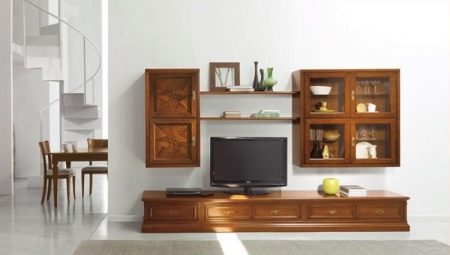
If you want your living room to look not only expensive, but also sophisticated, opt for Italian walls. Furniture from Italy is the best fit for a living room - after all, this is exactly the place where not only the whole family gathers, but also guests.

From time immemorial Italy has been famous for its furniture manufactories, which have kept family traditions passed down from generation to generation. The furniture created by Italian craftsmen is not just furnishings - it is an example of quality and luxury. Many of the craftsmen are members of the "Register of United Cabinetmakers", which includes only the most prominent representatives of the profession.
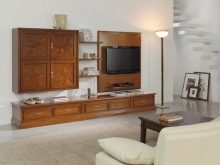
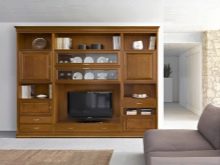
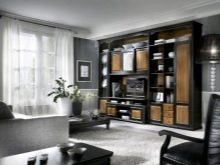
Speaking about Italian furniture in general and living room walls in particular, there are several main characteristics.
- Quality tested for centuries. It is not customary to save money on it in Italy. Therefore, buying a wall from Italian manufacturers can be considered a good investment of money - such a wall can outlive its owners. Hefor nothing in Europe, even in government offices, you can often find racks and wardrobes made in the past or even the century before last.
- Design. Italian cabinetmakers adhere to their style, skillfully combining centuries-old traditions and modern technologies.
- Practicality. Walls from Italy are not only beautiful in appearance, but also functional enough. They have many shelves, drawers and other accessories.
- Prestige. Having an Italian-made wall in your living room is not only pleasant, but also prestigious. The fact that the owners can afford such a luxury characterizes their wealth and excellent taste.
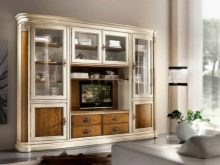
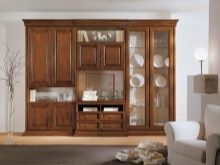
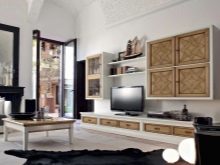
Manufacturing materials
For Italian-made products, mainly natural materials are used. Elite walls and other cabinet furniture are preferred to be made from solid wood. Mahogany and oak are favorites among them, the so-called classics of the genre.
The price for such products is quite high, but the quality will be appropriate.
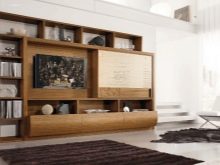

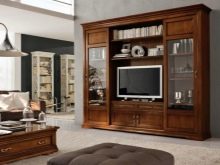
Cherry is slightly inferior to its position, and more democratic specimens are made from spruce. In the mass production of Italian walls, wood-based panels can be used, and veneer covering can be used on top. Prices for such products are lower, but outwardly they are in no way inferior to solid wood furniture. Individual wall elements can be finished with fabric, leather or excellent imitation leather.
Continuous improvement of production technologies allows you to create real masterpieces.
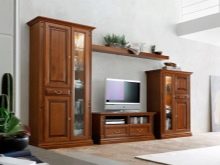
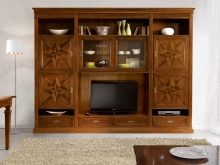
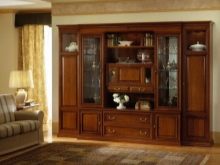
Features of production
All products of Italian manufacturers are considered environmentally friendly and meet European quality standards. In production, craftsmen skillfully balance between age-old traditions and modern technologies, while some stages of production are still performed by hand, and the amount of equipment used is minimized. Raw materials are processed without the use of chemicals, therefore the wall, if desired, can be placed not only in the living room, but also in the nursery.

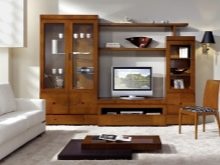
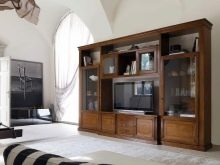
Wood entering production is dried under specified conditions. To obtain quality raw materials, a certain temperature and humidity level must be observed. After that, the wood is soaked in a special solution to make it resistant to deformation, and dried again. The entire drying process can last from six months to several years. At the final stage, the finished board is ground, polished and wax is applied.
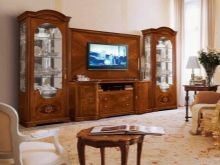
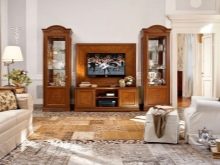

Stylistic directions
Traditionally, Italian furniture houses have been divided into two schools.
- Old World (Old World Ornate Italian). This school is characterized by the presence in furniture decoration of a large number of decorative elements that form a kind of ornament. As a rule, these are products made of wood or materials that perfectly imitate it. The shape is correct, strictly verified in geometry. Colors - all shades of brown from light beech to dark oak or cherry. Such walls are usually very spacious and bulky. They are more suitable for country mansions or the arrangement of fashionable clubs and hotels. Such things are offered by the oldest furniture houses, for example, AMClassic or Ceppi.
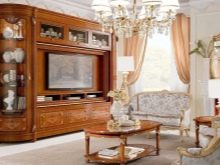
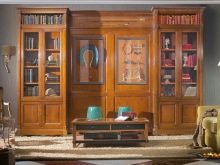
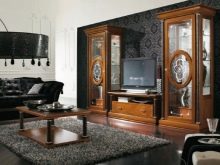
- Modern school (Modern Italian). In Italy, this style is called liberty. A more varied color palette prevails here - from pure white to bright avant-garde. In the Art Nouveau style, inserts made of colored glass and ceramics are allowed; forged elements may also be present, giving the whole atmosphere lightness and simplicity. Handles and other fittings can be made from inexpensive materials - usually brass or copper. Liberty-style walls are light, graceful, sometimes even seem like a toy. They will be equally appropriate in an apartment in a noisy metropolis and in a cozy country house. This style is offered, for example, by Carpanelli, Bizzotto.
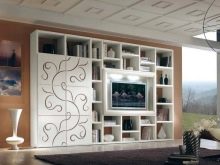
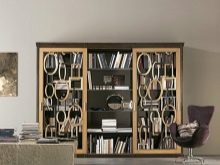
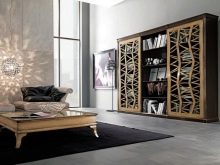
Modern Italian craftsmen are constantly looking for new non-standard solutions. This forces them to invent new technologies. Many furniture factories are guided by today's consumer needs and focus on simplifying forms and a variety of colors, while striving to ensure that furniture does not lose its functionality. For example, The assortment of the famous Kartell brand includes high-tech furniture made of thermoplastic with polyethylene elements.
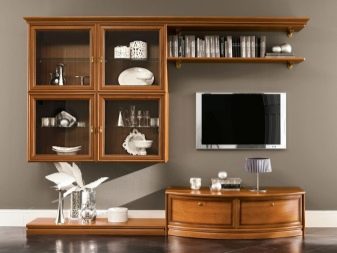
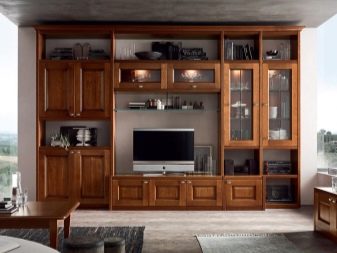
You can learn how to care for wooden furniture by watching the video below.








